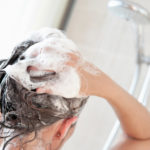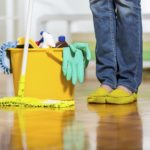What's Wrong With Triclosan?
I thought there was a ban on the use of triclosan in consumer products, but now I hear it accumulates on toothbrushes. What’s the story?
Andrew Weil, M.D. | January 10, 2017

In 2016 the FDA banned the use of the antibacterial agent triclosan in a number of products, including over-the-counter antiseptic soaps, gels and wipes. The agency concluded that manufacturers had failed to prove that products containing this chemical were safe to use long term or were more effective for preventing infections than ordinary soap and water. However, triclosan is still in widespread use in personal care products – some toothpastes, shampoos, and deodorants – as well as in cutting boards, and even telephones. Exposure to it is so pervasive that the U.S. Centers for Disease Control and Prevention reports that triclosan can be found in the urine of 75 percent of all U.S. residents, as well as in plasma and breast milk.
The FDA declined to extend its triclosan ban to toothpastes because the manufacturer of Colgate Total proved that the chemical reduces plaque and gum disease, benefits that were considered to outweigh any risks. While you can avoid triclosan in toothpaste by avoiding products that contain it, a study published in October 2017 found that triclosan accumulates in toothbrush bristles and is readily released even after you switch brands of toothpaste, possibly prolonging exposure.
Research has shown that triclosan has the potential to disrupt hormones in animals and humans. It also could contribute to antibiotic resistance, might harm the immune system and impair muscle function. Some research suggests that people with the highest concentration of triclosan in their urine are more likely to have allergies.
The toothbrush study showed that more than one third of 22 toothbrushes tested – including two marketed for use by children – accumulated triclosan. Over time, these brushes accumulated significant amounts of triclosan equivalent to seven to 13 doses of the amount used per brushing. Toothbrushes with “polishing cups” or “cheek/tongue cleaners” which are made with materials called elastomers absorbed the largest amounts. When triclosan-free toothpastes were used with the same brushes, the chemical continued to be released for two weeks. Disposal of used toothbrushes that have accumulated triclosan could result in the chemical leaching into the environment.
The best way to protect against any potential health risks posed by triclosan is to avoid products that contain it. Choose triclosan-free toothpaste and buy a new toothbrush. You can find a comprehensive list of products that contain triclosan on the website of the Environmental Working Group.
Andrew Weil, M.D.
Source:
Jie Han et al, “Nylon Bristles and Elastomers Retain Centigram Levels of Triclosan and Other Chemicals from Toothpastes: Accumulation and Uncontrolled Release.” Environmental Science and Technology, October 25, 20107, DOI: 10.1021/acs.est.7b02839












